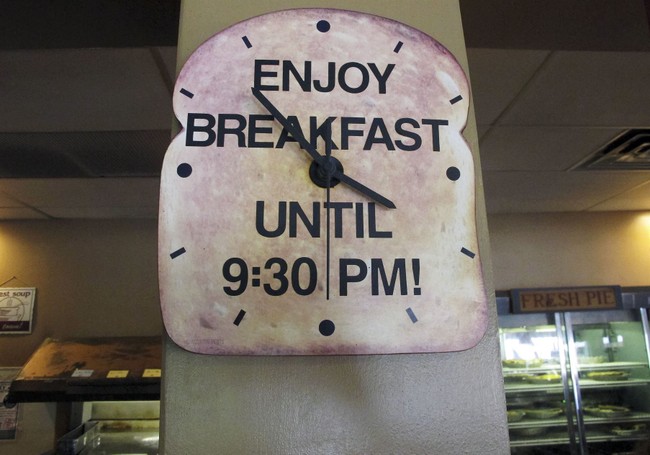We support our Publishers and Content Creators. You can view this story on their website by CLICKING HERE.

We’ve all been focused on a slightly big and important event that will happen in four weeks — the general election, of course, which takes place on November 5th — early and mail-in votes notwithstanding, that’s the day that (we can hope) this will all be decided.
Advertisement
But a few days earlier, on November 3rd, another somewhat less critical but far more useless event takes place: On that night, it will be time to “fall back” and set our clocks back to Standard Time, unless of course, you live in Arizona (outside the Navajo nation) or Hawaii. And, yes, it’s still a dumb idea, with little to recommend it, and it’s well past time to do away with it — but for now, it’s still the spring-ahead, fall-back reality. But that may be changing.
State and federal lawmakers have tried to put a permanent end to daylight saving time but with little progress (except for the times that we did, briefly, stop observing daylight saving time, only to return to it relatively quickly).
Twice a year, there are calls to end the practice and put the U.S. on either permanent daylight saving time or permanent standard time.
Nearly every state has brought forth and even passed legislation or resolutions to end the bi-annual clock changes. In most cases, the states are hoping to stay on daylight saving time year-round, which means “springing forward” in March and not “falling back” in November. Unfortunately, states aren’t able to make that decision on their own.
Under U.S. law, states need permission from Congress to observe daylight saving time year-round. They can opt into permanent standard time, like Hawaii and most of Arizona have, but not permanent daylight saving time.
Advertisement
Federalism is a great thing, and it would allow the end to this stupidity by having each state set the clocks on standard time permanently, which seems the obvious solution; it is, well, standard. Seventeen states, as of this writing, have at one point or another petitioned Congress to let them stay on permanent daylight savings time:
That hasn’t stopped states from passing legislation to, one day, be on permanent daylight saving time. In other cases, states have called on Congress to lock the clocks or give them that permission. That includes Alabama, Arkansas, Colorado, Florida, Georgia, Louisiana, Maine, Minnesota, Montana, Ohio, Oklahoma, Oregon, South Carolina, Tennessee, Utah, Washington, and Wyoming.
And another 17 have opted to try to pass bills locking the clocks on standard time – and failed.
Other states that have called for permanent daylight saving time in the latest legislative sessions, include Alaska, Illinois, Indiana, Iowa, Maryland, Massachusetts, Michigan, New Jersey, New York, North Carolina, Pennsylvania, South Dakota, Texas, Vermont, and Virginia. These bills have largely stalled. Similar bills in Mississippi and Nebraska died this year.
It’s a little baffling. Granted this is far from the most serious problem that vexes the American people at the moment, but it seems easy enough to deal with — why cannot Congress just end it? It’s been long enough — the whole thing was instituted in the U.S. in 1918, with the Standard Time Act, which, by the way, also codified our existing time zones into law.
Advertisement
Enough is enough already.
See Related: Feeling SAD? Seasonal Affective Disorder May Be the Cause
Meet the American Who Calibrated the Clock of the World
Granted, our whole system of time is arbitrary. The 24-hour clock dates back to the ancient Egyptians, who used 24 stars to mark the progress of the day/night cycle. The 365-plus-change day year is a reflection of the Earth’s rotational period and orbit, so that’s kind of fixed, but the clock could be divided up into as few or as many intervals as we like; the current one is just tradition. But it’s a tradition we’re used to.
But running the clocks back in the fall and ahead in the spring is an idea that’s long since outlived its usefulness. It’s time the states did away with it. Jump onto standard time — or daylight, whatever — just pick a time and stick with it. It will save us that little annoyance in spring and fall, and believe me, most folks these days don’t have the annoyance tolerance to spare.

 Conservative
Conservative  Search
Search Trending
Trending Current News
Current News 





